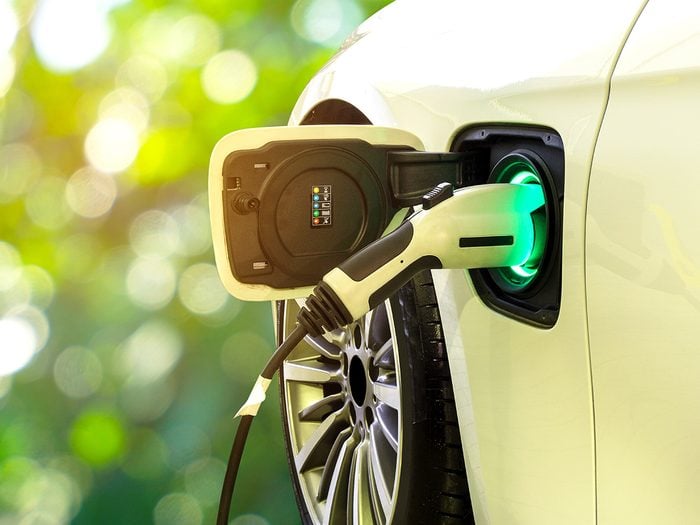What Canada’s Electric Car Targets Will Mean For Canadians—and the Environment

By 2025, Canada's government wants one out of every 10 new car sales to be an electric vehicle (EV). We asked transportation researcher Josipa Petrunic about what that means for the average Canadian—and for the environment.
Reader’s Digest Canada: The federal government has set some ambitious targets for electric vehicle (EV) use: 10 per cent of new cars purchased by 2025 must be EVs, and 30 per cent by 2030. How are we doing?
Josipa Petrunic, executive director and CEO of the Canadian Urban Transit Research and Innovation Consortium.: We are currently between three and four per cent. Our government targets are aggressive but not impossible—if we make some changes. Over the last few years, the focus has been on subsidies and other financial incentives: if you buy an EV you get a tax write-off. That is one piece of the puzzle, but it’s not enough. We have to start pricing roadway, which could be incredibly effective, but it’s politically unsavoury. (Find out 12 things you’re not claiming on your taxes—but should be.)
Do you mean road tolls?
Exactly. You’d have to pay to enter any major city, and you would pay less or not at all if you have an EV. In the U.K., tolls for entering London have been extremely effective, both in cutting down congestion and in reducing car use and getting more people onto transit. If the overall goal of emissions reduction is hitting our Paris Agreement targets and saving the planet, only getting those who can afford it into an EV is not going to move the needle.
We know EVs are better for the planet, but how much better?
Using a zero-emissions vehicle or giving up a car altogether is the most effective thing a person can do to reduce their carbon footprint, other than having fewer children.
Along with expense, one common reason for EV hesitancy is the lack of charging stations.
We have enough stations to handle the number of EVs on the road today, but not enough if we were to see more mainstream adoption. But, also, the vast majority of charging happens at home: you plug in your car at night and in the morning you’re good to go.
Good to go how far?
That depends on battery power, which varies from vehicle to vehicle. Overall energy capacity of batteries has improved, though. The 2015 Nissan Leaf, which is an entry-level EV, got about 200 kilometres on one charge. Now it’s about 250 to 300 kilometres, so enough for day-to-day life but not enough for hopping on the highway and heading out of town.
That’s no small issue, given our national enthusiasm for the great Canadian road trip.
Actually, 90 per cent of driving life is short-range trips—commuting to work, driving to Costco, going to a soccer game. We need to convince Canadians to choose cars that suit those day-to-day needs. Then, for the other 10 per cent of their driving life—say, the rare drive to a cottage—they may consider car-rental or ride-sharing programs.
The Automotive Parts Manufacturers’ Association is spearheading a new project backed by 335 companies to create an all-Canadian EV. Is that a promising sign?
It’s exciting to see new projects getting attention and funding. But I also want to point out that we have been manufacturing electric buses in Canada for over half a decade. Maybe they’re not as sexy as a Canadian Tesla, but if we want to talk about change, transit is the way forward. People buy cars one by one, but cities buy public transit vehicles in mass quantities. With public transit, we’re not talking about a curve that goes up in tiny increments; we can see the line shoot up.
Next, find out what Canada’s ban on single-use plastics will mean for Canadians—and the environment.






